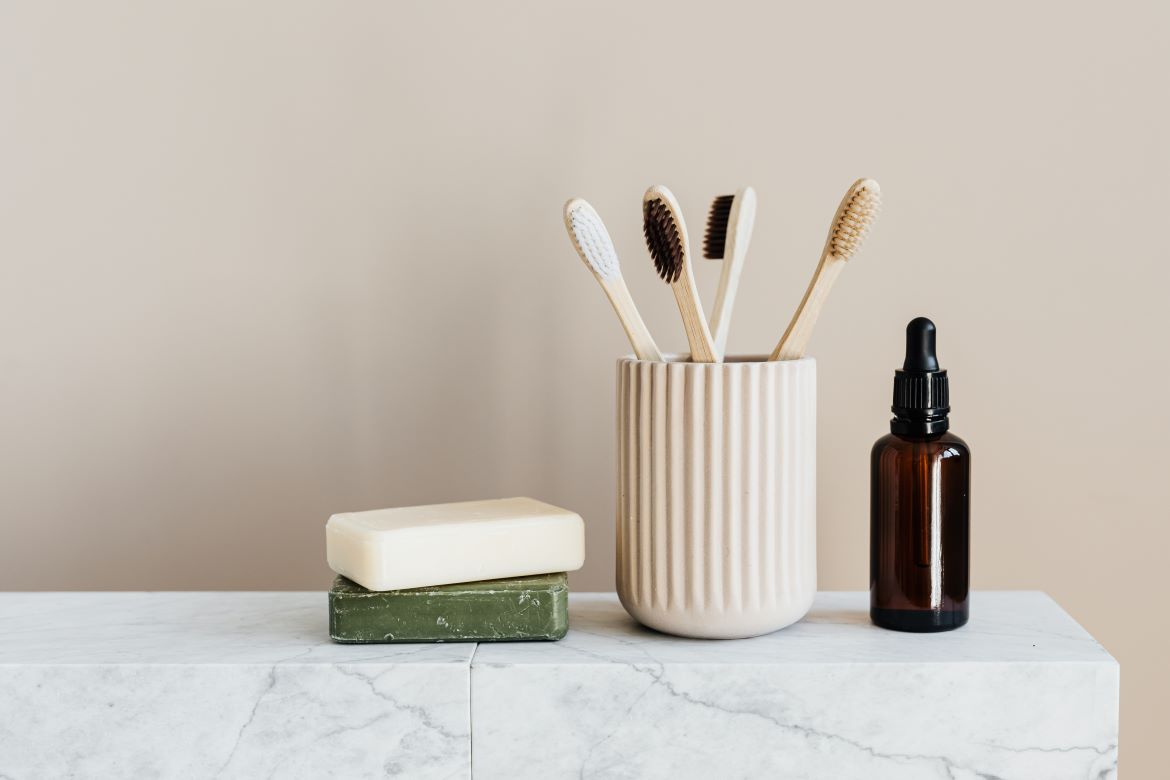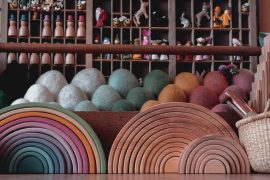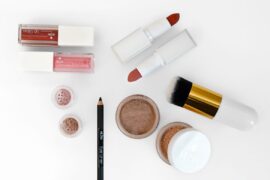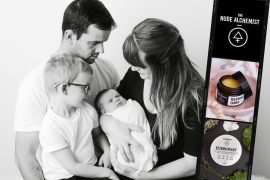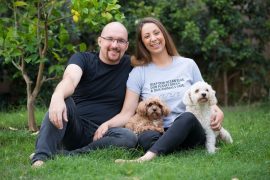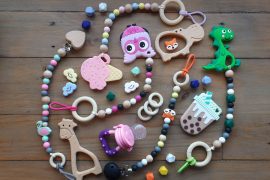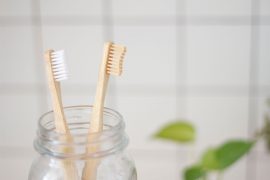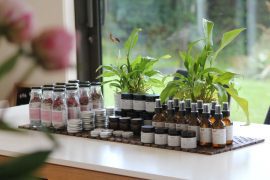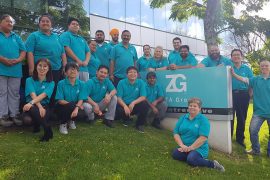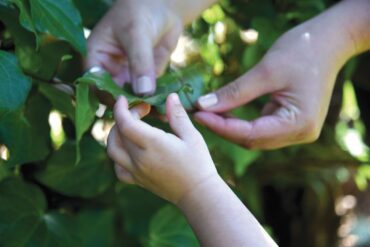By Danielle Vick
Plastic-free is one of those buzzwords that can seem a little broad, a little intense, and completely impossible for the average person.
While I’m still pretty far from truly plastic-free, I found it easiest to start in the bathroom. In my research, I was appalled to find out how many personal hygiene products are laced with chemicals and sourced from non-renewable resources. As my daughter started to reach for these products, I felt a sense of urgency to find safer, more sustainable alternatives.
Many of our bathroom routines are the product of habit. And many of those habits start in childhood. Starting our kids off right – not just for the environment but for their own health – is a pretty good reason to make some easy plastic-free swaps.
1. Toothbrush
If you follow the manufacturers’ recommendations, you’re supposed to replace your toothbrush every three months. Which means each of us will use and discard about 300 toothbrushes in our lifetimes. Made from a combination of plastic, rubber and nylon, there’s no way to responsibly dispose of a plastic toothbrush besides throwing it in the trash.
Luckily, eco-friendly bamboo is a sustainable material for products like toothbrushes (don’t believe the eco-friendly claims when it comes to fabric).
As a toothbrush, bamboo is biodegradable, compostable and doesn’t use any petroleum in the manufacturing process.
If you’re interested in making an easy plastic-product switch, this is hands-down the best product to start with because there’s no difference in using a bamboo toothbrush than a plastic one.
2. Floss
Flossing might not be high on your list of environmental concerns. For a long time, we were stuck with traditional dental floss, which is made from nylon, a petroleum-based product, and coated in a Teflon-like wax, exposing you to highly toxic PFCs. These chemicals help guide the floss between our teeth without tearing, but also have links to ADHD, thyroid disease, and damages to the immune and hormone systems.
Fortunately, there are alternatives. I now use a 100% silk floss. It’s compostable, mint-flavored with Candelilla wax and is contained in a glass, refillable bottle. Like the bamboo toothbrush, it feels exactly like the petroleum-based, toxic-chemical, waxed traditional floss, making it an easy switch.
3. Toothpaste
Nobody buys toothpaste because it’s good for the environment. We want whiter teeth and no cavities. It’s that simple. Traditional toothpastes contain ingredients like parabens, microbicides (antibacterial chemicals banned in some countries), saccharin (a known carcinogen) and sodium pyrophosphate (responsible for creating dead aquatic zones). Plus, those plastic tubes are designed to last forever yet carry something we will use for about a month. Every year, one billion tubes of toothpaste head to the landfill.
Toothpaste tablets can take a little getting used to, as they are not a straight replacement to squishy tube toothpaste. But once you do, you’ll never go back to the tube.
The ones I use arrive in a glass bottle that lasts me about six months. You pop one in your mouth, crush it between your teeth and start brushing.
3. Mouthwash
Once I ditched other plastic dental products, for me the missing link was mouthwash. Traditional mouthwash, like other dental hygiene products, is filled with synthetic chemicals and packaged in non-recyclable plastic.
So after coming across a mouthwash tablet that dissolves in water, the plastic-free part of me geeked out. An interesting side note, my 11-year-old daughter loves the mouthwash tablets. She think the whole process is fun, something not usually associated with kids and mouthwash.

